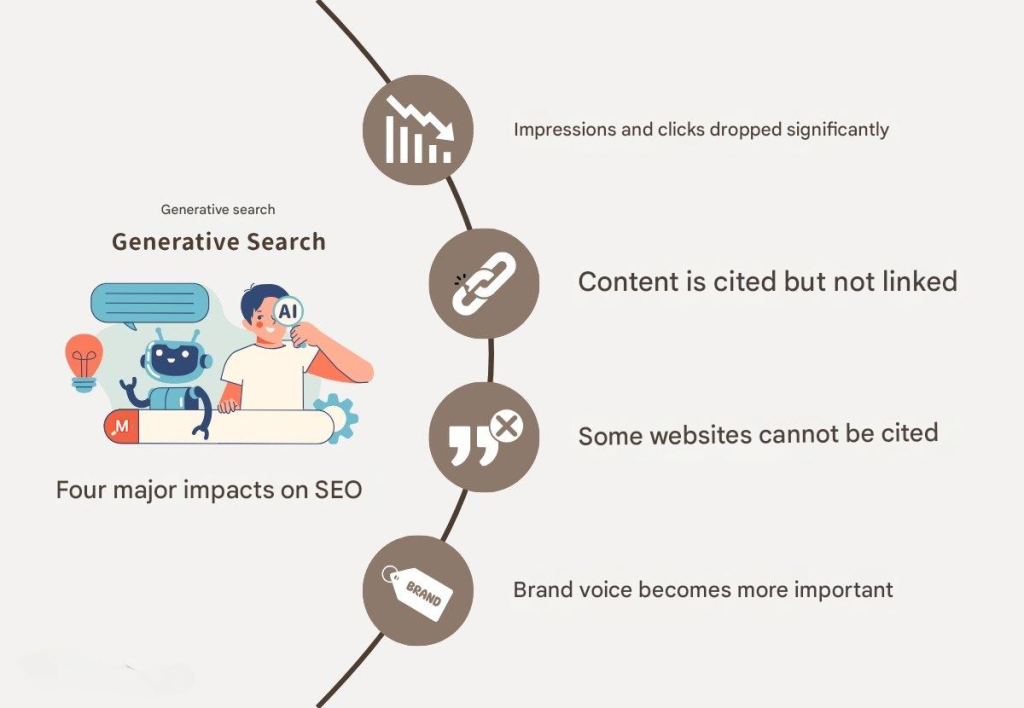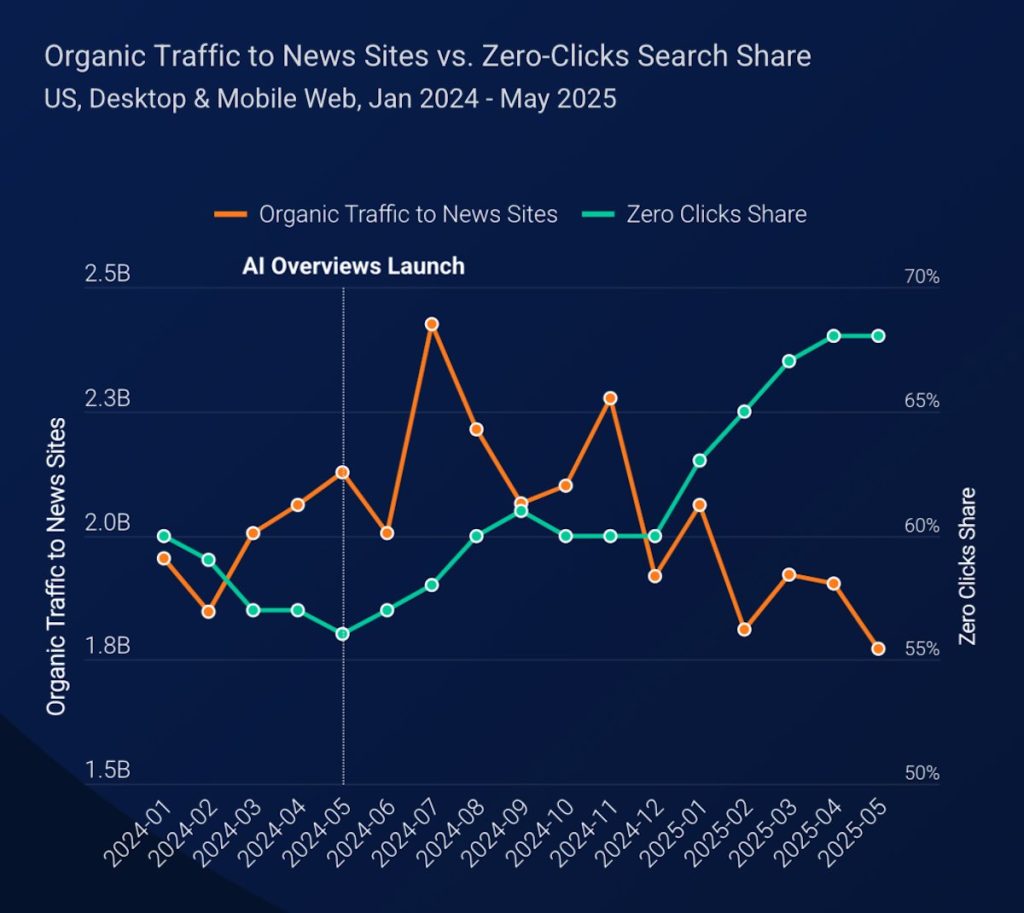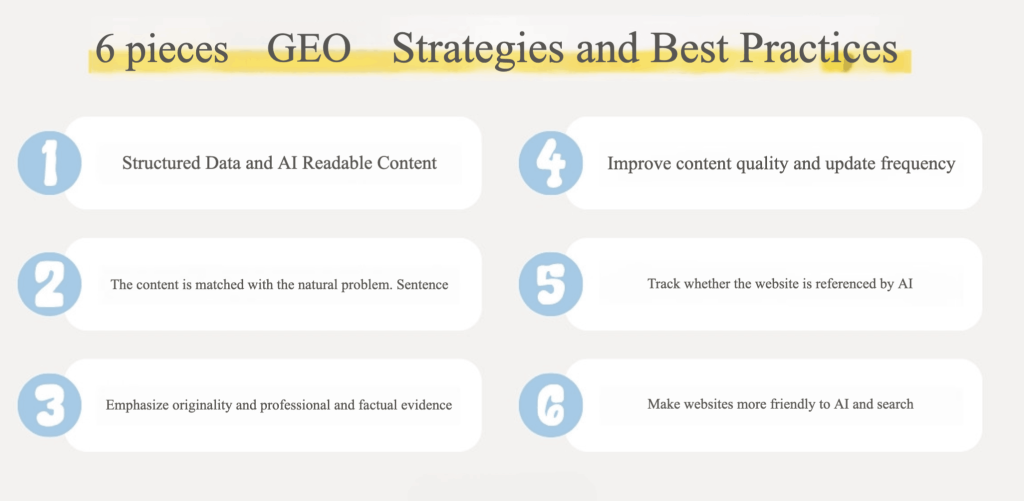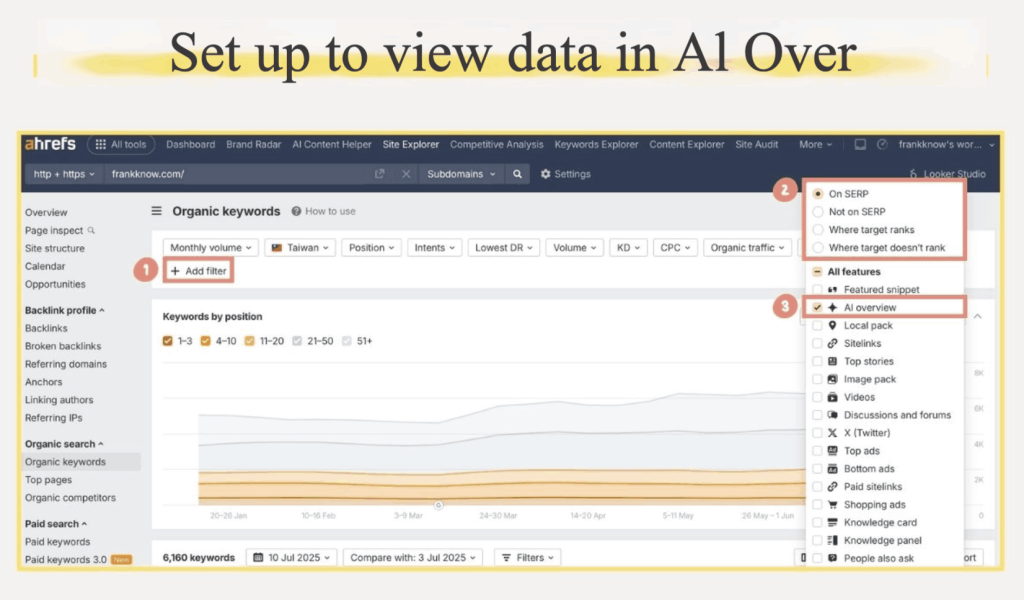With the rapid development of AI, generative engine optimization (GEO) has attracted attention similar to that of SEO. This article will comprehensively introduce GEO-related knowledge, allowing readers to understand and master GEO optimization methods.
What exactly is Generative Engine Optimization (GEO)?
The rise of generative AI search tools has redefined the way we search for results. When searching no longer just returns a series of blue links, but instead AI directly generates organized answers, we need new optimization strategies to ensure that website content still has a chance to be seen.

Definition and origin of GEO
GEO, short for Generative Engine Optimization, is a content optimization method specifically designed for generative AI engines such as ChatGPT, Perplexity, Gemini, and others.
This term first emerged at the end of 2023, proposed by a group of foreign experts specializing in AI search behavior and SEO strategies, and quickly became a hot topic in the content marketing field.
What is the purpose of GEO?
Unlike SEO, which aims to “gain exposure or ranking” in search results, GEO focuses more on making your content easier for AI to crawl, understand, and reference in responses, “making your content part of AI answers.”
Even if users don’t click on the link, as long as your brand name, narrative content, or data information is referenced by AI, it is a new form of exposure.
Therefore, the goal of GEO can be simply understood as:
Ensure that your website and content appear in AI responses and are presented accurately and positively.
This layout may have long-term benefits for brand visibility, professional image, and subsequent conversion.
What generative AI is currently available?
Mainstream generative AI engines can be primarily categorized into two types based on their functionality: “integrated generative search tools” and “standalone question-answering generative tools,” each capable of generating answers and citing sources:
1.Integrated Generative Search Tools
- Google AI Overview: Originally named Search Generative Experience (SGE), it is now widely deployed in Google Search, capable of generating comprehensive answer summaries with related links.
- Google AI Mode (Gemini-powered): Fully launched in the US in June 2025, it offers multi-step reasoning and multi-modal interaction capabilities.
- Microsoft Copilot: Combining ChatGPT technology, it extends AI-generated answers for search results and supports real-time citations.
- You.com: Originally a personalized search engine, it began integrating LLM in 2022 and provides citation responses, making it one of the first AI search engines with real-time web access and multimodal chat functionality.
2.Standalone question-and-answer generation tools
- ChatGPT (with browser/plugin): Since 2023, it has supported real-time web sources, enabling instant queries and responses to user questions.
- Google Gemini: A multimodal large model developed by Google DeepMind, it has been gradually deepening its applications since its launch in 2023, such as Gemini Chat and search integration.
- Perplexity AI: Launched in December 2022, its key feature is the inclusion of real-time source citations in generated responses, such as academic literature and domain-specific content.
- Claude (Anthropic): Emphasizes high-quality responses and toolchain capabilities, often cited as one of the most accurate AI systems in the industry.
These generative AI tools are capable of “directly answering user questions” and actively citing information when generating responses—this is precisely the key area that the GEO strategy aims to address.
The Impact of Generative Search on SEO
For website operators, the SEO rules we were familiar with in the past are no longer entirely applicable in the face of AI-generated content and answer summaries. What impact will these changes have on websites? You may already be experiencing some of them:

Significant decline in website exposure and click-through rates
By using AI tools to directly obtain answers or display them directly on the search page, there is no longer a need to click through to the website. This has led to a situation where content websites, blogs, or media sites that previously relied on organic traffic are experiencing a decline in clicks and traffic despite maintaining their rankings.

According to Similarweb’s report, “The Impact of Generative AI,” after Google AI Overview went live, the percentage of searches without clicks in the US rose from 56% to nearly 69% by May 2025.
During the same period, natural traffic to news media websites declined significantly, from a peak of over 2.3 billion visits to less than 1.7 billion.
Website content is quoted without links
Generative AI sometimes quotes text, statistics, or paragraphs from websites, but does not necessarily include the source or clickable links.
Even when the source is displayed, it may only be the text source without a hyperlink, making it impossible for users to click through. This devalues many high-quality content websites without generating actual traffic or conversions.
Some websites can never be cited.
Not every website will be cited by AI.
Generative search tends to select “reliable and authoritative” sources, with platforms such as government agencies, Wikipedia, well-known media outlets, Quora, and Reddit accounting for the majority of citation weight.
This means that many small and medium-sized websites, no matter how well-written their content may be, may not even have the opportunity to appear in AI responses.
Brand promotion is more important than ever.
In the past, SEO focused on keyword rankings, but now in the GEO era, brand names themselves carry weight.
AI models will prioritize brands or individuals that are frequently mentioned and trusted. Building brand awareness and ensuring that brands are searched for and mentioned has become one of the key indicators for future GEO optimization.
Search Engine Optimization (SEO) vs Generative Engine Optimization (GEO)
In the past, when we talked about SEO, we were referring to making it easier for search engines to understand website content, improve rankings, and attract clicks. Now, with GEO, the answerer has become AI, and the goal is to ensure that websites are correctly referenced and fully presented on these generative platforms.
What are the differences between SEO and GEO? Can the two coexist? Let’s start by looking at a comparison table:
| Material specifications | Ad Format | GEO (Generative Engine Optimization) |
|---|---|---|
| Main objectives | Increase organic search traffic and improve website rankings | Increase AI search citation rates and enhance brand visibility in AI responses |
| Optimization Object | Search engines (Google, Bing, etc.), humans | Generative engines (AI Overviews, ChatGPT, Gemini), humans |
| Basis for assessment | Click-through rate, ranking, organic traffic | Whether cited, brand mentioned, link or source indicated |
| Optimization Focus | Keyword layout, internal and external links, website architecture, meta data, etc. | Natural language, question-oriented, semantically clear, structured data (such as FAQs) |
| Effectiveness tracking methods | GA4, Search Console, and other SEO tools | Tools that support AI analysis, such as GA4 referral sources and SEMrush citation analysis |
| Update frequency | Following search engine algorithm adjustments | Follow AI model training and citation logic adjustments |
Comparison of SEO and GEO Differences
If you want to learn more about the practical application and operational techniques of SEO, you can refer to the following articles to help you lay a solid foundation for SEO!
Is GEO a supplement to future SEO? Or will it replace it?
GEO is not intended to replace SEO, but rather to serve as an extension and complement to SEO.
SEO addresses the issue of “how search engines understand websites,” while GEO tackles the challenge of “how AI understands and references websites.”
As generative search becomes more widespread, both will develop in parallel, especially in highly competitive industries. Those who can excel at both SEO and GEO will gain exposure advantages on both search engines and AI engines.
In simple terms, SEO helps you “be seen” in search results; GEO helps you “be referenced” in AI responses.
How does GEO work? Practical strategies and best practices
If we go back to basics: Generative AI produces answers by understanding large amounts of language content, then the core of the GEO strategy is to make your content easier for AI to see, understand, and reference.
The following are six practical GEO recommendations to help you seize exposure opportunities in the era of generative engines.

1. Structured Data and AI-Readable Content
The first step in enabling AI to correctly understand your content is to establish a clear structure.
Using the correct HTML tags (such as <h1>, <p>, and <ul>) and adding structured data from schema.org (such as FAQs, products, reviews, etc.) can help AI quickly grasp the key points.
2. Pair content with natural question formats
Generative AI tends to reference clear, semantic question-and-answer content. It is recommended to use natural language question formats (e.g., “What is XXX?” “What are the benefits of XXX?”) in your articles, paired with conversational, easy-to-understand response styles.
This writing approach helps ensure your content is fully captured in AI responses.
3. Emphasize originality, professionalism, and factual basis
AI tools tend to cite “reliable sources.” This means your content should have clear sources, authentic professional perspectives, or even firsthand experience or data.
Especially in fields like healthcare, law, and finance—areas that impact your finances or life—content with authority and EEAT (Experience, Expertise, Authoritativeness, Trustworthiness) characteristics is more likely to be selected by AI.
4. Improve content quality and update frequency
AI typically prefers the latest, most comprehensive websites, so regularly updating old articles, strengthening long-tail keyword content, and supplementing references and image descriptions are all part of GEO’s daily work.
Don’t let your content be ignored by algorithms due to being outdated. Maintaining freshness is key to maintaining exposure opportunities.
5. Track whether your website is being referenced by AI
While there is currently no “GEO-specific tracking tool,” you can use GA4 to analyze referral traffic from AI tools or observe whether tools like ChatGPT or Perplexity display snippets of your website’s content.
Additionally, tools like Ahrefs or SEMrush may also reveal some clues about AI-referenced sources.
6. Make your website more AI and search engine friendly
Many people think that GEO is a “new SEO,” but GEO is not meant to replace SEO; rather, it is meant to make your content appealing to both AI and search engines.
The data sources used to train generative AI currently come primarily from public web pages and search engine results. In other words, if you want AI to more easily crawl your content, the most basic requirement is that “your website must already be strong, clear, and valuable.”
How should GEO effectiveness be measured?
Check if AI Overviews has referenced your content
Currently, on Google’s search engine, if a website is referenced by AI Overviews, data such as exposure and clicks are not yet separated in Search Console, so you need to use third-party SEO tools such as SEMrush and Ahrefs to track it.

Take Ahrefs as an example. After entering your domain, go to Site Explorer > Organic keywords report, and click +Add filter > SERP features > select “AI Overview” to view the relevant data.
GEO is an extension of SEO, not a replacement for it.
The emergence of GEO has indeed ushered content marketing into a new arena, but this does not mean that SEO is now obsolete. In fact, Generative Engine Optimization (GEO) is essentially an extension and evolution of SEO, simply expanding its scope from search engines to AI response models.
In the past, we optimized websites to help Google better understand our content; now, we also need to ensure that AI models can capture key insights and be willing to reference our perspectives. The optimization strategies remain rooted in structured content, original value, technical optimization, and continuous updates—all core principles of SEO.
Rather than asking whether GEO will replace SEO, it’s more accurate to say: those who master SEO are already at the starting line of GEO.
Future content exposure will come from search results pages and may also come from AI response boxes. What we can do is prepare early, ensuring our content can be found and also “cited.”
Common Questions About SEO
Q: What is the difference between GEO and SEO? Which one should I do?
A: SEO optimizes your website’s ranking in search results, while GEO makes it easier for AI models to understand and reference your content. The two are not mutually exclusive and should be done in parallel. GEO is an extension of SEO in the AI era.
Q: How can I tell if AI is referencing my website content?
A: You can use third-party tools like SEMrush or Ahrefs to check if your content appears in AI Overview references, or use GA4 to see if there is referral traffic from platforms like ChatGPT or Gemini.
Q: How do I start with GEO?
A: Begin by creating structured content (such as FAQs or how-to guides), using natural language question-and-answer formats, and maintaining original and professional content. Regularly track whether your content is being referenced by AI—this is the first step in actually implementing GEO.

